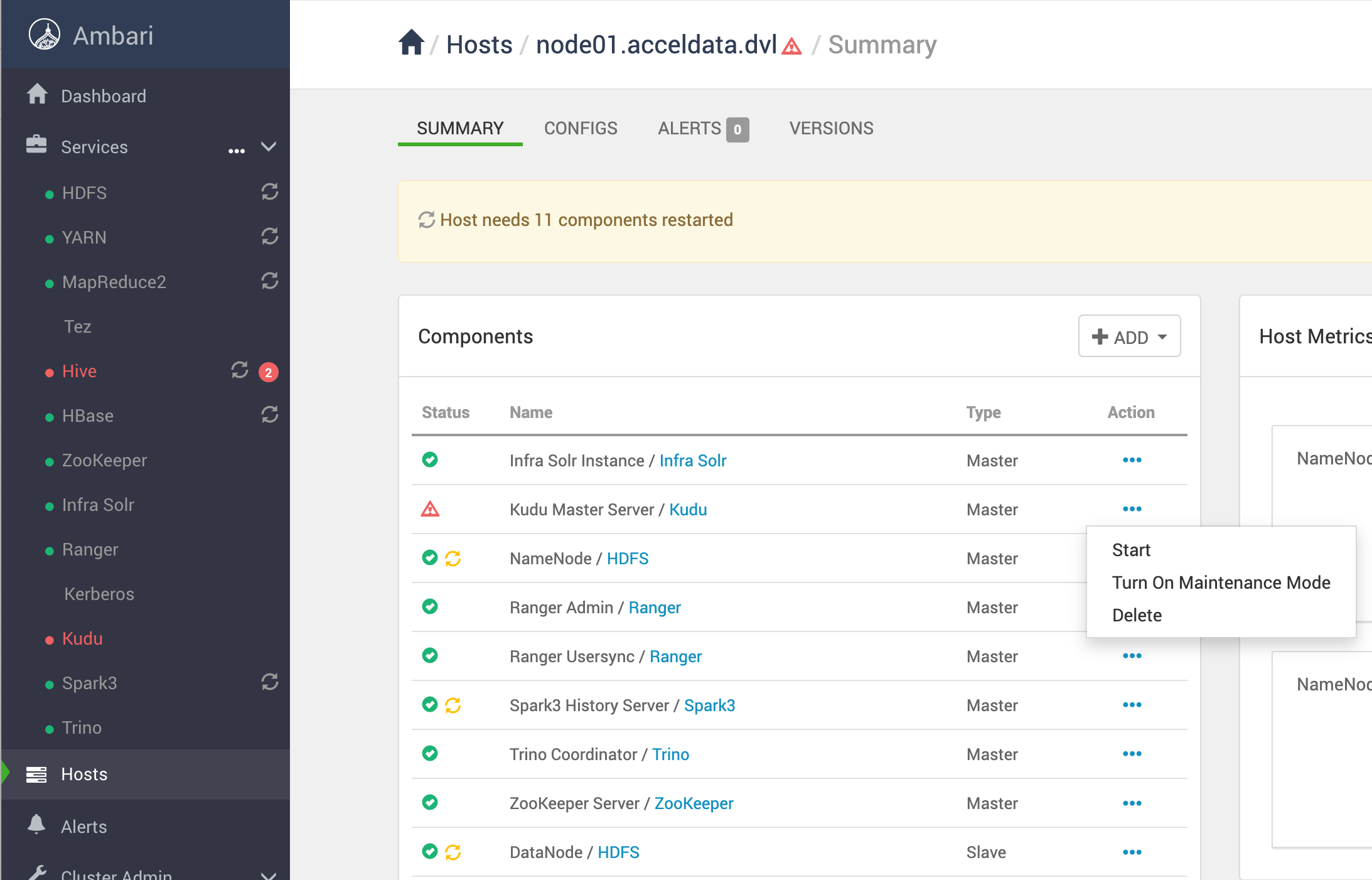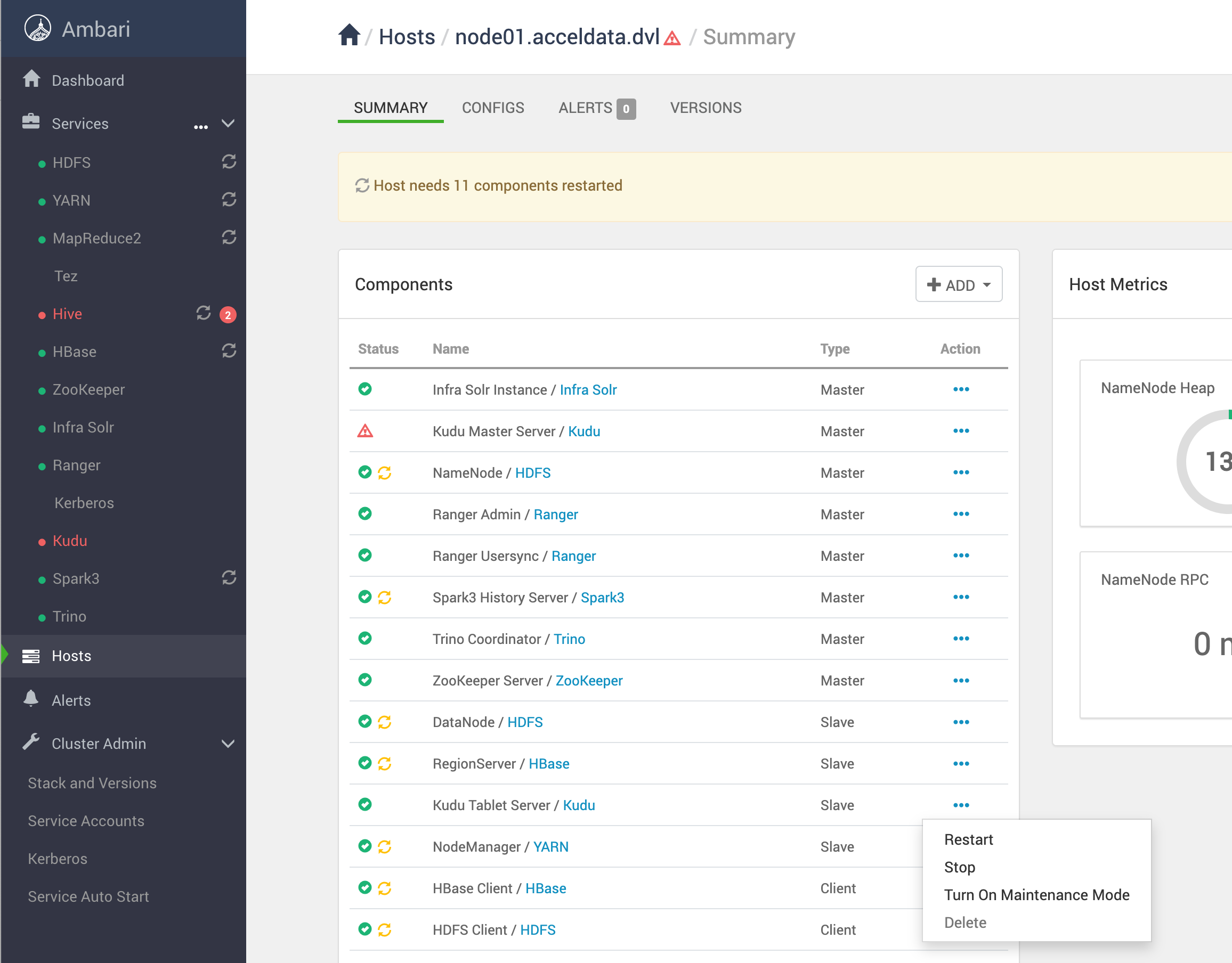This page describes key security, availability, and backup considerations when removing or recovering a Kudu Master in a multi-master deployment.
Security and Permissions
- Run all command-line operations as the Kudu UNIX user (typically
kudu). - If your cluster is secure, authenticate as the Kudu service user before running commands.
High Availability Impact
- After removal, the cluster now operates with two masters instead of three, resulting in reduced fault tolerance.
- With two masters, the cluster can tolerate the loss of only one additional master.
- If high availability is critical, plan to add a replacement master to restore redundancy.
Backup Recommendations
- Ensure you have recent backups before making configuration changes.
- Consider taking a snapshot of the current cluster state before proceeding.
Recover from a Dead Kudu Master in a Multi-Master Deployment
If a Kudu Master is determined to be dead:
Prevent the dead master from running again
- Ensure the affected master is not running and cannot be restarted at any point during the replacement process.
- Accidentally starting the dead master can lead to corruption.
- Allocate at least one hour to complete this process.
Delete the affected master in Ambari
- In the Ambari UI, delete the Kudu Master component on the affected host.
- Example:

Remove master configuration and WAL data from the affected host
rm -f /etc/kudu/conf/master.confrm -rf /var/lib/kudu/wal/These steps ensure the affected master cannot accidentally be restarted.
Stop all tablet servers in the cluster
- Use the Ambari UI to stop tablets individually for each host that has a tablet.
- Example:

For more details, see Apache Documentation.
Was this page helpful?
On This Page
Important Considerations for Master Removal and RecoverySecurity and PermissionsHigh Availability ImpactBackup RecommendationsRecover from a Dead Kudu Master in a Multi-Master DeploymentPrevent the dead master from running againDelete the affected master in AmbariRemove master configuration and WAL data from the affected hostStop all tablet servers in the cluster